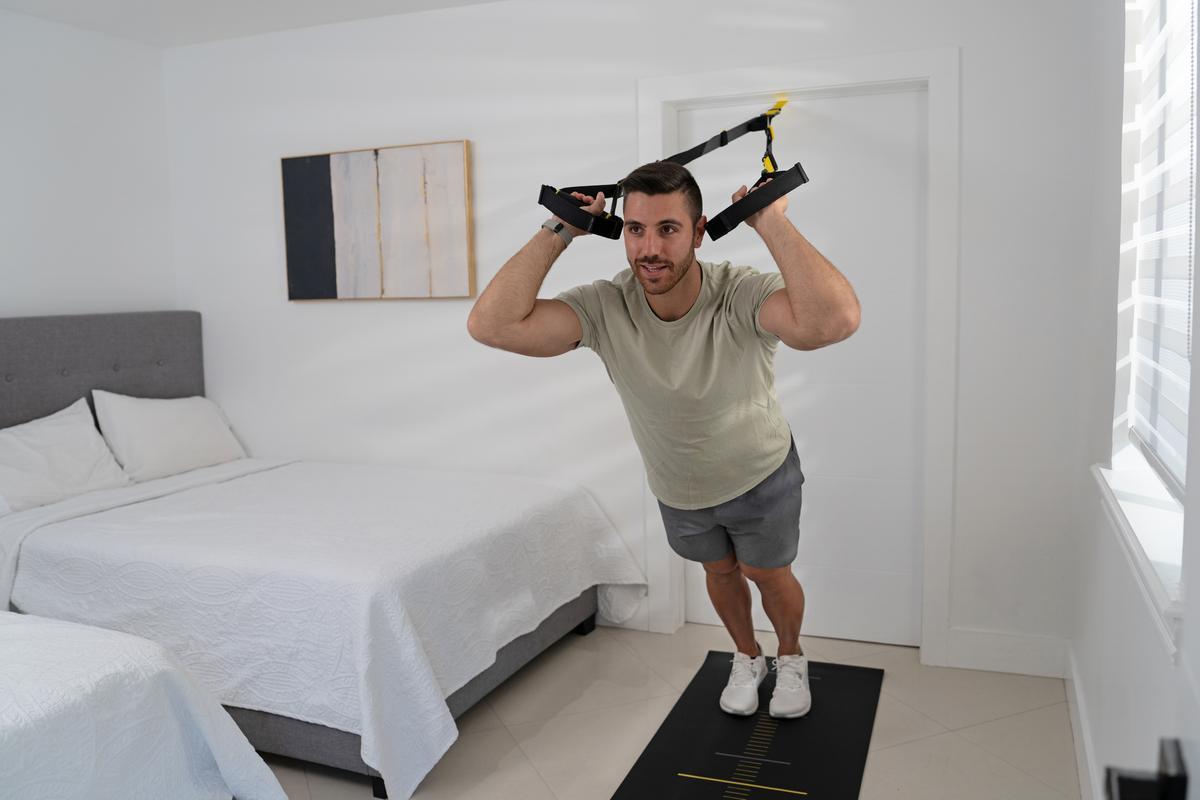Athletes in sports like swimming, baseball, and tennis are especially prone to shoulder injuries due to repetitive overhead movements.
But here’s what most coaches won’t tell you: preventing shoulder injuries isn’t just about technique. It’s about the right tools and training. If you’re an athlete, you’re at the right place.
We’re here to help you understand shoulder injuries, how to prevent them, and the gear you’ll need. Let’s get started!
Understanding Shoulder Injuries in Athletes
When you repeatedly perform the same sport-specific movements, your shoulders take the brunt.
Swimming exercises, for instance, involve stroke after stroke that creates repetitive stress on the shoulder joints. In baseball or tennis, constant throwing or serving also wears down shoulder muscles.
Combine that with poor posture—rounded shoulders and a forward head position—and your shoulders are set up for injury.
Another common issue? Muscle imbalances. Think of it like driving a car with uneven tire pressure. Eventually, something’s going to break down.
The rotator cuff and scapular stabilizers are the key players in shoulder stability. If they’re neglected while primary movers (like the deltoids) are overtrained, you’re setting yourself up for potential breakdown.
Related: Try These 8 TRX Shoulder Exercises for Muscle & Strength
Types of Shoulder Injuries
Your rotator cuff consists of four muscles that keep your shoulder stable. Injuries here can range from tendinitis to partial or complete tears.
A Rotator Cuff Tear is one of the most common and debilitating shoulder injuries, often caused by overuse, trauma, or degeneration over time. It can limit your range of motion and weaken your ability to lift or rotate the arm. Shoulder impingement is another common issue, occurring when the tendons are compressed in the subacromial space during overhead movements.
Labral tears, which involve the fibrocartilage ring around the shoulder socket, also pose a significant risk. Imagine a baseball teetering on a wobbly tee—that’s your humerus in a compromised joint. Keep it stable, and you’ll maintain full athletic control.
5 Ways to Prevent Shoulder Injuries
Now that you understand shoulder injuries, it's time to show you how to prevent them.
1. Strengthen the Rotator Cuff and Scapular Muscles
Your rotator cuff and scapular stabilizers act as the foundation for all shoulder movements. These smaller muscles need targeted strengthening to balance the larger, more dominant deltoids and pectorals.
Focus on exercises that isolate these areas through controlled movements. External rotations, Y-raises, and scapular wall slides are excellent starting points. Resistance bands and suspension training can add controlled instability, forcing these stabilizers to work harder. Aim for higher repetitions with lighter resistance to build endurance rather than bulk.
2. Maintain Proper Posture and Shoulder Mechanics
Poor posture creates a cascade of problems that eventually lead to injury. When your shoulders round forward and your head juts out, the shoulder joint operates from a compromised position, increasing stress on tendons and ligaments.
Focus on keeping your shoulder blades back and down, chest open, and head aligned over your spine. During athletic movements, maintain scapular control—your shoulder blade should move smoothly along your rib cage. Practice proper mechanics during training to ensure they become automatic during competition. Core strengthening also plays a crucial role, as a stable trunk provides the foundation for efficient shoulder movement.
3. Implement Dynamic Warm-Ups and Mobility Work
Cold muscles and stiff joints are injury magnets. A proper warm-up gradually increases blood flow and prepares your shoulders for the demands ahead.
Start with gentle arm circles and cross-body stretches, progressing to more dynamic movements like arm swings and band pull-aparts. Include thoracic spine mobility work—cat-cow stretches and thoracic rotations help free up the upper back, reducing compensatory stress on the shoulders. Spend at least 10-15 minutes warming up, with extra attention to any areas that feel particularly tight or restricted.
4. Balance Training Loads and Ensure Adequate Recovery
Overtraining is one of the fastest routes to shoulder injury. Your muscles and connective tissues need time to repair and adapt between sessions.
Follow a periodized training plan that varies intensity and volume throughout the week. Include at least one full rest day and incorporate active recovery sessions with light movement and stretching. Monitor your fatigue levels and don't push through sharp pain or persistent soreness. The TRX Suspension Trainer can be useful for low-impact recovery work, allowing you to control resistance precisely. Remember: tissue adaptation happens during rest, not during training.
5. Utilize Sport-Specific Prehabilitation Programs
Generic shoulder exercises won't fully prepare you for the specific demands of your sport. Swimmers need different preparation than baseball pitchers, and tennis players face unique challenges compared to volleyball players.
Design your prehab program around the movement patterns you perform most frequently. If you're a thrower, emphasize deceleration training and posterior shoulder strength. Swimmers should focus on maintaining flexibility while building endurance in stabilizing muscles. Include exercises that mimic your sport's movements at slower speeds and lighter loads, gradually building tolerance. Work with a sports medicine professional or qualified trainer to develop a program tailored to your specific needs and competitive schedule.
Why Should You Use TRX For Preventing Shoulder Injuries?
Total resistance training conditions your shoulders for the unpredictable demands of sport. The Suspension Trainer™ and Rip Trainer™ challenge your stabilizers to maintain control against shifting resistance by utilizing gravity.
Think of it like training on an unstable surface; the body has to work harder to maintain balance, resulting in stronger, more resilient shoulders.
Add This TRX Shoulder Program to Prevent Injuries
If you're new to resistance training, this simple program will help protect your shoulders without overwhelming you.
These exercises are easy to learn, safe to perform, and take just 15-20 minutes to complete. You’ll need a suspension trainer, which you can get from our website or at your local gym.
Perform 2 rounds of these exercises, resting 30 seconds between each exercise.
1. TRX Row
-
Reps: 10-12
-
Why: Strengthens your back to balance out chest muscles
-
How: Stand facing the anchor point, lean back at a comfortable angle, and pull your chest toward the handles
-
Make it easier: Walk your feet back to stand more upright
2. TRX Y-Fly
-
Reps: 8-10
-
Why: Targets often-neglected rear shoulders
-
How: Lean forward slightly, raise arms into a Y shape overhead
-
Make it easier: Take a smaller forward lean
3. TRX Chest Press
-
Reps: 10-12
-
Why: Builds pressing strength with shoulder stability
-
How: Face away from anchor, lean forward into handles, press like a push-up
-
Make it easier: Stand more upright to reduce the angle
4. TRX T-Deltoid Fly
-
Reps: 8-10
-
Why: Improves posture and shoulder blade control
-
How: Lean back, pull arms out to sides making a T shape with your body
-
Make it easier: Adjust your stance to be more upright
5. TRX External Rotation
-
Reps: 10 per arm
-
Why: Directly strengthens rotator cuff muscles
-
How: Elbow at 90 degrees, rotate forearm outward keeping elbow still
-
Make it easier: Shorten the straps for more stability
When to Add These TRX Movements to Your Prehab Routine
-
Try to aim for 2-3 times per week
-
Use these exercises before your main workout as a warm-up
-
TRX is great on rest days as a way to actively recover and prepare your body.
This simple routine takes less time than watching a sitcom episode, but it's one of the best investments you can make in your athletic future. Start here, stay consistent, and you’ll see the progress
Stay Strong, Stay Injury-Free with TRX
Shoulder injuries don't have to be an inevitable part of your athletic journey.
Remember to strengthen your rotator cuff and scapular muscles, maintain proper posture, warm up dynamically, balance training with recovery, and develop a sport-specific prehabilitation program.
Your shoulders are the foundation of nearly every athletic movement, so investing in their health now will support your athletic goals for years to come.
Ready to take the next step in shoulder injury prevention?
Explore TRX Training's suspension trainers and educational resources designed specifically for athletes looking to build bulletproof shoulders. Your future self will thank you for starting today.



